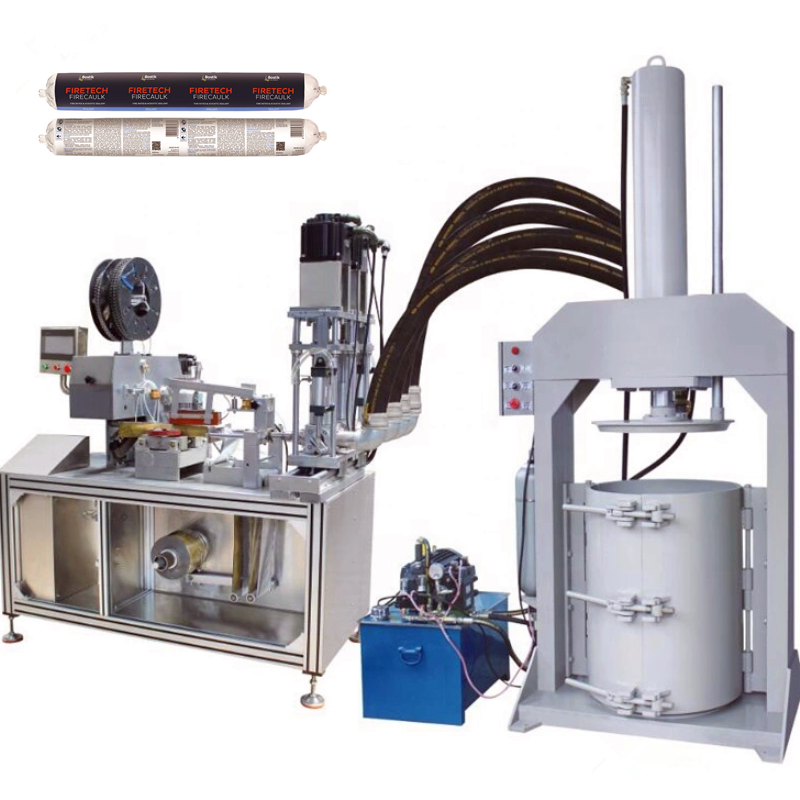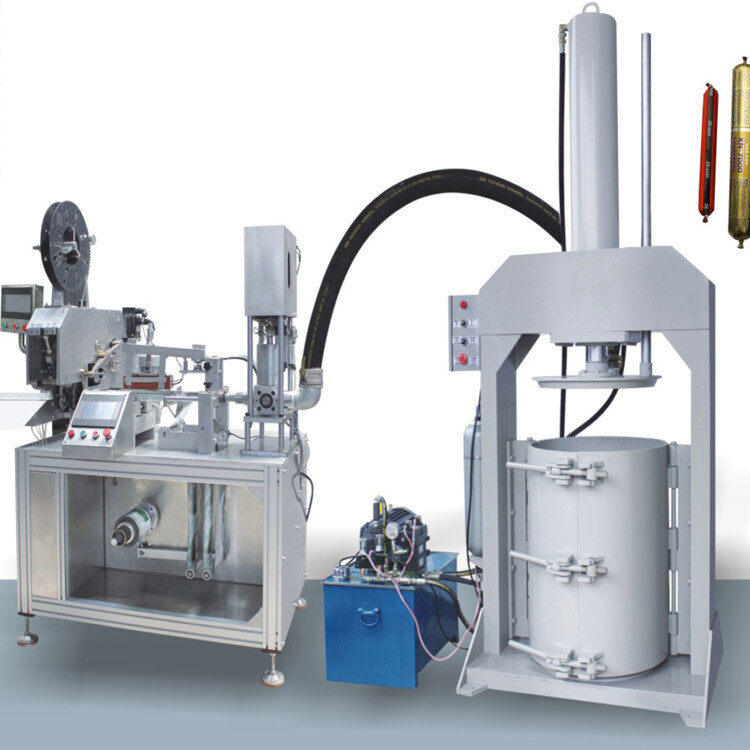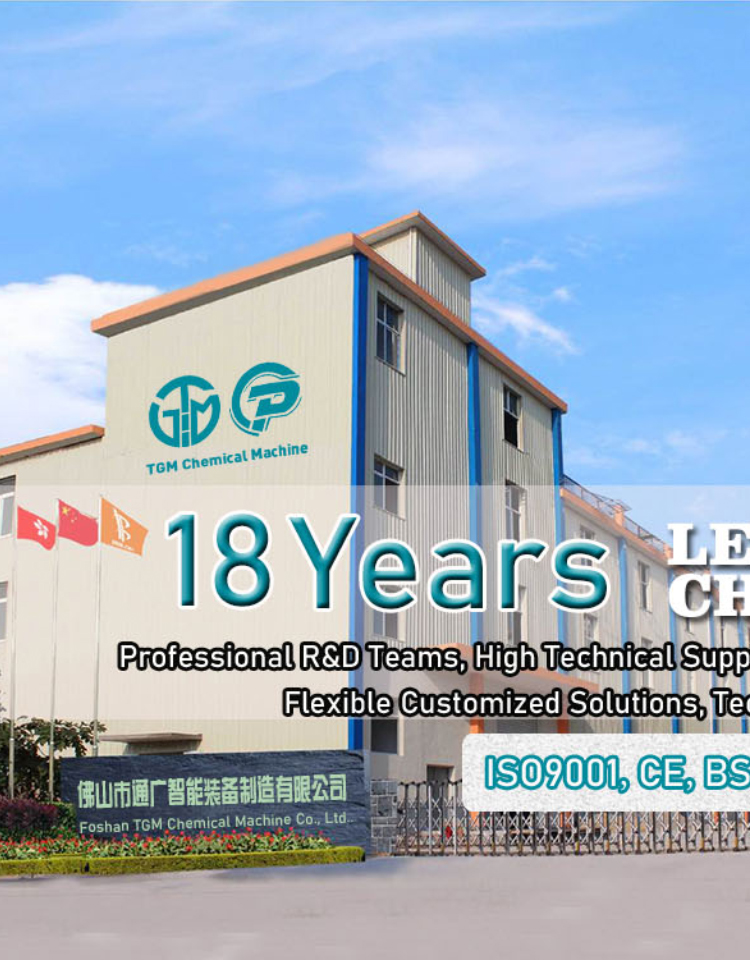Email cannot be empty
Password cannot be empty
Email format error
Email cannot be empty
Email already exists
6-20 characters(letters plus numbers only)
The password is inconsistent
Email format error
Email cannot be empty
Email does not exist
6-20 characters(letters plus numbers only)
The password is inconsistent


Sausage Silicone Sealant Filling Machine: A Comprehensive Guide to Choosing and Using the Right Equipment
In industries like construction, automotive, and general manufacturing, silicone sealants play a critical role in ensuring durability, weather resistance, and flexibility. However, an often overlooked aspect is the machine that packages these sealants efficiently — the sausage silicone sealant filling machine. This specialized equipment streamlines the filling process, enhances precision, and contributes to consistent product quality. In this guide, we’ll dive into what makes a sausage silicone sealant filling machine essential, explore the types, features, and benefits, and offer insights into selecting the right model for your business.
What is a Sausage Silicone Sealant Filling Machine?
A sausage silicone sealant filling machine is designed specifically to fill silicone sealant into sausage-style tubes or cartridges. These machines are customized to handle high-viscosity materials, ensuring that the sealant is deposited into the packaging smoothly and without air bubbles. The result is a perfectly filled sausage tube of silicone sealant, ready for commercial or industrial use.
The Importance of Sausage Silicone Sealant Filling Machines in Manufacturing
- Enhanced Precision: Precision is crucial for maintaining consistency across products, and the filling machine delivers that by controlling the exact amount of sealant in each tube.
- Increased Efficiency: These machines streamline the production line, allowing manufacturers to increase output without compromising quality.
- Waste Reduction: By precisely controlling the fill amount, the filling machines minimize waste, which is both economically and environmentally beneficial.
- Cost-Effectiveness: Automation through the filling machine reduces manual labor costs and speeds up production.
Types of Sausage Silicone Sealant Filling Machines
Choosing the right type of filling machine depends on factors like production scale, material type, and budget. Here are the primary categories:
1. Manual Sausage Silicone Sealant Filling Machines
These machines require manual operation and are suited for small-scale production or businesses with limited budgets. While slower than automatic machines, they offer greater control over the filling process.
2. Semi-Automatic Sausage Silicone Sealant Filling Machines
A semi-automatic filling machine requires some level of manual intervention but automates key processes to increase efficiency. It is ideal for mid-sized operations that need a balance between manual control and automation.
3. Fully Automatic Sausage Silicone Sealant Filling Machines
For large-scale production, fully automatic machines are the best choice. These filling machines come with advanced features like programmable settings, automated filling and sealing, and fast output rates.
Key Features to Look for in a Sausage Silicone Sealant Filling Machine
When selecting a filling machine, consider the following essential features:
1. Filling Speed and Volume Control
Machines with adjustable filling speeds and volume controls allow you to set the exact amount of sealant per unit, making it easier to adapt to different tube sizes.
2. High-Quality Nozzles and Valves
Nozzles and valves should be durable and capable of handling high-viscosity sealants. Look for machines with anti-drip nozzles to prevent product wastage.
3. Material Compatibility
Since silicone sealant is a thick, sticky material, the filling machine should be compatible with high-viscosity substances.
4. User-Friendly Interface
Machines with an intuitive control panel and clear instructions improve user experience and minimize errors, making the operation of the filling machine easy for anyone on the production line.
5. Safety Features
Safety is paramount in any manufacturing setting. Choose a machine that includes emergency stop buttons, overload protection, and automatic shutdown features to prevent accidents.
Benefits of Using a Sausage Silicone Sealant Filling Machine
1. High-Quality Output
The filling machines ensure that each tube is filled with an accurate, uniform amount of sealant, reducing inconsistencies.
2. Scalability
Whether you run a small business or a large manufacturing facility, these machines can scale production to meet demand, helping businesses grow without compromising on quality.
3. Reduced Labor Costs
Automation reduces the need for manual labor, leading to significant cost savings, especially when scaling up production with the filling machine.
4. Improved Product Presentation
Since the filling machine fills each tube precisely, it enhances the appearance and packaging quality of each unit, an essential factor for brand presentation and customer satisfaction.
How to Choose the Right Sausage Silicone Sealant Filling Machine for Your Business
With many models available, selecting the perfect sausage silicone sealant filling machine can be challenging. Here are the key factors to consider:
1. Production Volume
Identify your expected production volume. For high-demand manufacturing, an automatic filling machine may be more efficient and cost-effective than a manual one.
2. Budget
Determine your budget and look for machines that provide the best value for your investment. While fully automatic machines are pricier, they offer long-term cost savings through increased efficiency.
3. Machine Size and Layout Compatibility
Ensure that the machine fits within your workspace. Some filling machines come in compact models, ideal for smaller facilities.
4. Maintenance Requirements
Look for a machine that’s easy to clean and maintain, as sealant residue can accumulate and affect performance.
5. Manufacturer Reputation and Customer Support
Choose a reputable manufacturer known for quality and reliability. Good customer support is essential, especially for complex equipment like a sausage silicone sealant filling machine.
Maintenance and Care for Your Sausage Silicone Sealant Filling Machine
Maintaining your filling machine is vital for longevity and consistent performance. Here’s a maintenance checklist:
- Regular Cleaning: Clean the machine after each production run to prevent buildup, particularly around nozzles and valves.
- Lubricate Moving Parts: Regular lubrication reduces wear and tear on mechanical components.
- Inspect for Wear and Tear: Periodic checks on parts like valves and nozzles can help you catch issues early, ensuring the filling machine operates smoothly.
- Software Updates: If your machine is computerized, check for firmware updates from the manufacturer to ensure it’s running the latest features.
- Replace Parts When Necessary: Replace any worn or damaged parts immediately to avoid compromising the machine's efficiency and safety.
Innovations in Sausage Silicone Sealant Filling Machines
The sealant industry constantly evolves, and the filling machines are no exception. Some recent innovations include:
1. AI-Driven Quality Control
Newer machines come equipped with artificial intelligence for quality checks, ensuring each sealant tube meets preset standards.
2. Enhanced Material Handling Capabilities
Advanced machines are better equipped to handle various sealant types, including eco-friendly and biodegradable options, making them adaptable for diverse product lines.
3. Energy Efficiency
Manufacturers are developing more energy-efficient filling machines, reducing power consumption and helping companies achieve sustainability goals.
Frequently Asked Questions (FAQs)
1. What is the typical output speed of a sausage silicone sealant filling machine?
Most automatic filling machines can fill several hundred tubes per hour, depending on the machine’s configuration and the sealant’s viscosity.
2. Can a sausage silicone sealant filling machine handle different types of sealants?
Yes, many machines can be adjusted to handle various sealant types. However, high-viscosity sealants like silicone require machines specifically built for thicker materials.
3. How much training is required to operate a sausage silicone sealant filling machine?
Most machines are user-friendly and require minimal training. However, it’s recommended to provide hands-on training for operators to ensure they understand safety and maintenance protocols.

Conclusion
A sausage silicone sealant filling machine is a valuable asset for manufacturers, offering efficiency, precision, and scalability. Whether you’re looking to enhance small-scale production or streamline high-volume manufacturing, investing in the right machine can improve product consistency, reduce waste, and increase your bottom line. As with any significant equipment purchase, take time to assess your specific needs, budget, and space constraints to find the best filling machine that fits your operation.
By following the guidelines outlined in this article, you’ll be well-equipped to make an informed decision, maintain your machine, and optimize your production line for long-term success.

